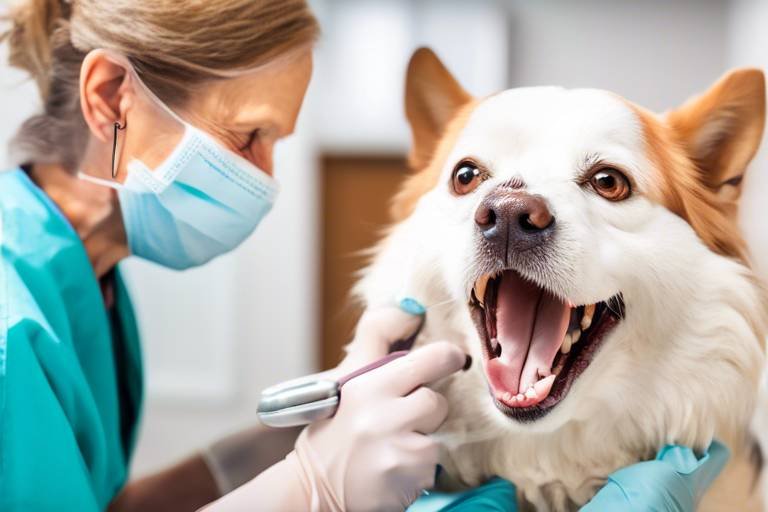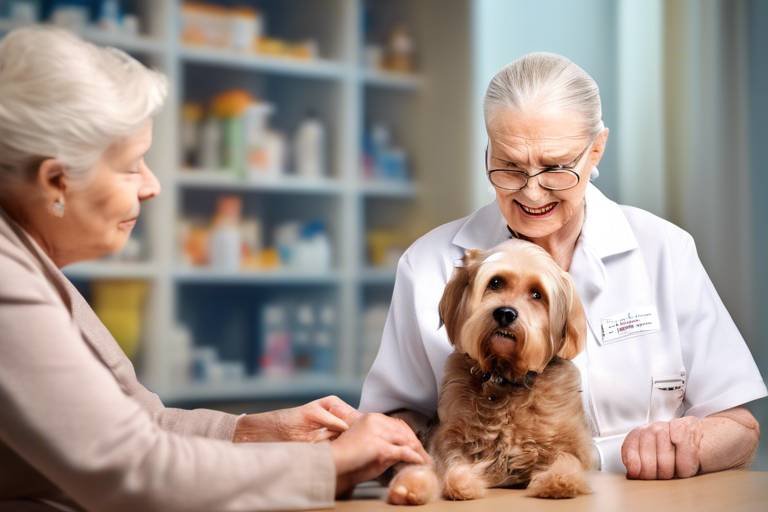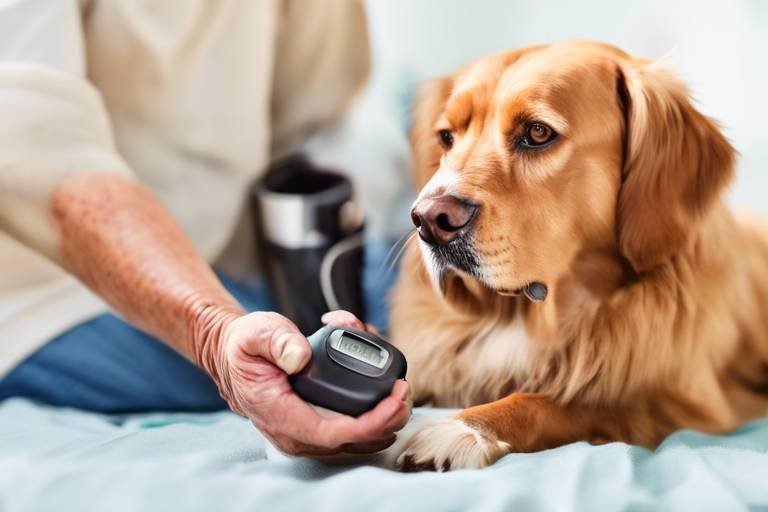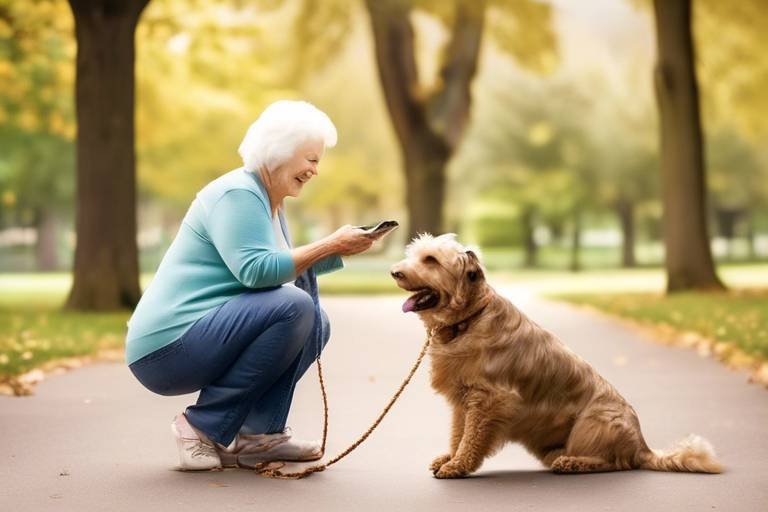How to Spot Early Signs of Aging in Pets
As our beloved furry companions age, it can be both a heartwarming and challenging experience. Just like us, pets don't always show their age in obvious ways. Instead, they may exhibit subtle signs that can easily be overlooked. So, how can you tell if your pet is starting to age? It's essential to be observant and attentive to the changes that occur in their behavior, physical appearance, and overall health. This article will explore the subtle signs of aging in pets, helping owners to recognize and address their furry friends' changing needs as they grow older.
As pets age, they undergo various physical transformations. These changes can range from slight alterations in their coat to more significant issues like weight gain or loss. Observing these shifts can help owners understand their pet's health and comfort levels, ensuring they receive the necessary care. For instance, you might notice that your pet's fur is no longer as shiny or that they are developing gray hairs around their muzzle. These signs, while seemingly minor, can indicate that your pet is entering their golden years.
Older pets often exhibit changes in behavior that can be quite telling. Recognizing these shifts is crucial for maintaining their well-being and adapting their environment to suit their evolving needs. For example, a once playful dog may become less interested in chasing after toys or playing fetch. This decline in energy can be one of the first signs of aging. Owners should monitor their pets' activity to ensure they remain engaged and stimulated.
A noticeable decline in energy and playfulness can be one of the first signs of aging. Just like humans, pets may not have the same stamina they once did. If your dog used to love long walks or your cat was always ready to pounce on a toy, a sudden lack of interest can be disheartening. Owners should encourage gentle play and short walks to keep their pets engaged without overexerting them.
As pets age, their sleep patterns may change significantly. You might find your pet sleeping more than usual or having difficulty settling down. Increased sleep or restlessness can indicate discomfort or health concerns that need attention. It’s essential to provide a comfortable sleeping area, as this can help alleviate some of their discomfort.
Aging pets may show changes in their appetite, which can be a red flag for owners. Whether it’s increased hunger or reluctance to eat, monitoring these habits is essential for maintaining their health. A sudden increase in appetite could signal a metabolic change, while a decrease might indicate dental issues or other health concerns. Regularly checking in on their eating habits can help you catch potential problems early.
Older pets may become less social or exhibit changes in their interactions with humans and other animals. You might notice that your pet is less interested in playing with other dogs at the park or seems to prefer solitude. Understanding these changes can help owners provide the right level of companionship and support. It’s crucial to maintain a balance between giving them space and ensuring they don’t feel isolated.
Recognizing early signs of health issues is vital for aging pets. Being aware of common ailments can lead to timely veterinary intervention and improved quality of life. For instance, dental health often declines in older pets, and owners should be vigilant about signs of dental disease, as it can lead to pain and other health complications.
Dental problems can significantly affect an older pet's quality of life. Bad breath, difficulty chewing, or pawing at their mouth are all signs that dental care may be needed. Regular dental check-ups can help prevent serious health issues down the line.
Aging pets frequently experience joint stiffness and mobility challenges. Identifying these issues early allows for appropriate management, ensuring their comfort and mobility. If your pet struggles to jump onto the couch or seems to hesitate before climbing stairs, it may be time to consult your veterinarian for advice on joint supplements or pain management options.
Routine veterinary visits become even more critical as pets age. Regular check-ups can help detect early signs of aging and manage potential health issues effectively. It's essential to keep a close relationship with your vet during this time, as they can provide guidance tailored to your pet's specific needs. Remember, prevention is always better than cure!
- How often should I take my aging pet to the vet? Regular check-ups are recommended at least twice a year for older pets.
- What are common signs of aging in pets? Look for changes in activity levels, appetite, dental health, and social behavior.
- Can diet affect my aging pet's health? Absolutely! A balanced diet tailored to their age can help maintain their health.
- Is it normal for older pets to sleep more? Yes, increased sleep is common as pets age, but it’s essential to monitor for any sudden changes.

Physical Changes
As our beloved pets age, they undergo a series of physical transformations that can be both subtle and pronounced. These changes are not just cosmetic; they often reflect underlying health issues or shifts in their overall well-being. For pet owners, being able to recognize these signs is crucial to ensuring that our furry companions remain comfortable and healthy throughout their golden years.
One of the most noticeable changes is the graying of fur. Just like humans, pets can show signs of aging through their appearance, and a shift from vibrant colors to gray or white fur can be a clear indicator. This change can be particularly evident around the muzzle and eyes, giving our pets a distinguished, but sometimes sad, look. Along with changes in fur color, you might also notice a thinning of the coat. A once-lush fur coat may become sparse or brittle, which can be a sign that your pet is experiencing health issues or nutritional deficiencies.
Another physical change to keep an eye on is weight fluctuations. Aging pets may either gain weight due to decreased activity levels or lose weight due to health problems such as dental issues or digestive disorders. It's essential to monitor your pet's weight regularly, as any significant change could indicate underlying health concerns. A simple scale can be your best friend in tracking these changes.
Moreover, pets may develop joint stiffness and mobility issues as they age. If you notice your pet struggling to jump onto the couch or hesitating to go for walks, these could be signs of arthritis or other joint problems. Regularly observing how they move can help you identify these issues early. You might even want to consider keeping a journal of their activity levels, which can be a useful tool when discussing your pet's health with a veterinarian.
Lastly, don’t overlook the importance of skin health. Older pets may experience changes in their skin, such as dryness, flakiness, or even the development of lumps and bumps. Regularly checking your pet's skin and consulting with your vet about any concerning changes can help catch potential issues before they escalate. Remember, a pet’s skin can be a window into their overall health.
In summary, being vigilant about the physical changes in your aging pet is vital. By recognizing these signs early, you can ensure that your beloved companion receives the necessary care and attention they deserve. After all, they rely on us to keep them comfortable and happy as they navigate their later years.
- What are the first signs of aging in pets?
Common signs include graying fur, decreased activity levels, and changes in appetite. - How can I help my aging pet?
Regular vet check-ups, a balanced diet, and gentle exercise can greatly improve their quality of life. - Is it normal for older pets to sleep more?
Yes, increased sleep is common in aging pets, but any sudden changes should be discussed with a vet. - When should I take my pet to the vet?
If you notice any significant changes in behavior, appetite, or physical condition, it's best to consult a veterinarian.

Behavioral Shifts
As our beloved furry companions age, their behavior often takes on a new dimension, revealing subtle yet significant changes that can be both surprising and concerning. Recognizing these is crucial for ensuring that our pets continue to thrive in their golden years. One of the most prominent changes you might notice is a decline in energy levels. Just like us, pets can experience a dip in their enthusiasm for playtime and outdoor adventures. This doesn't necessarily mean they are unhappy; it could simply be a sign that they need a different kind of engagement. Think of it like a seasoned athlete who no longer sprints but instead enjoys leisurely strolls.
Another area to watch closely is their sleeping patterns. Older pets might find themselves dozing off more frequently throughout the day. While a little extra naptime can be normal, if you notice your pet struggling to settle down or appearing restless, it could indicate underlying discomfort or health issues. Imagine how frustrating it would be for us to toss and turn all night—our pets feel the same way! Paying attention to their sleeping habits can provide insights into their overall well-being.
Moreover, you might observe altered eating habits as your pet ages. Some pets may develop an increased appetite, while others may show reluctance to eat. This shift can be due to various factors, including dental issues, digestive problems, or simply a change in their taste preferences. It's essential to monitor these changes closely, as they can significantly impact your pet's health. If your furry friend suddenly turns up their nose at their favorite kibble, it might be time for a vet visit to rule out any health concerns.
Lastly, consider how your pet interacts socially. Aging pets often become less social, preferring to spend time alone rather than engaging with other pets or even their human family members. This withdrawal can be a natural part of aging, but it’s essential to assess whether it stems from discomfort or anxiety. Providing a calm and secure environment can help ease their transition into this new phase of life. Just like a wise elder who values solitude, your pet may simply need a little more quiet time to recharge.
In summary, being attuned to these behavioral shifts can make a world of difference for your aging pet. By recognizing and addressing their changing needs, you can ensure they enjoy a comfortable and fulfilling life, even as they grow older.
- What are the first signs of aging in pets? Early signs can include decreased activity, changes in sleep patterns, and altered eating habits.
- How can I help my aging pet adjust to their changes? Providing a comfortable environment, regular vet check-ups, and adapting their diet can significantly help.
- When should I be concerned about my pet's behavior? If you notice significant changes in their behavior, appetite, or energy levels, it’s best to consult a veterinarian.
Decreased Activity Levels
As your beloved pet ages, one of the most noticeable changes you might observe is a decrease in activity levels. It's not just about them being less playful; it’s a significant shift that can be a window into their overall health and happiness. Imagine your once energetic dog, who used to sprint around the yard with boundless enthusiasm, now lying on the couch for hours. This change can be subtle at first, but over time, it becomes more apparent. You might find yourself wondering, "Is my pet just being lazy, or is something more serious going on?"
Decreased activity can manifest in various ways. For instance, your pet may show less interest in their favorite toys or may prefer to nap instead of joining you for a walk. This shift can be attributed to a variety of factors, including natural aging processes, joint pain, or even underlying health issues. It's essential to monitor these changes closely. If you notice your pet is less eager to engage in play or seems tired after short walks, it might be time to consult your veterinarian.
Additionally, consider how you can adapt your pet's environment to keep them engaged. While they may not be able to run around like they used to, there are still plenty of ways to stimulate their minds and bodies. Here are a few ideas:
- Interactive Toys: Invest in toys that challenge your pet mentally, such as puzzle feeders or treat-dispensing toys.
- Gentle Exercise: Instead of long walks, consider shorter, more frequent strolls that cater to their current energy levels.
- Socialization: Arrange playdates with other calm pets to keep their spirits up without overwhelming them.
It's crucial to remember that while decreased activity is a normal part of aging, it shouldn't be ignored. Staying proactive about your pet's health can lead to a happier, more comfortable life for them. Regular vet check-ups can help identify any underlying issues contributing to their lethargy. After all, a healthy pet is a happy pet!
Q: What should I do if my pet is less active?
A: Monitor their behavior closely and consult your veterinarian to rule out any health issues. Engaging them with gentle activities can also help.
Q: How can I tell if my pet is in pain?
A: Signs of pain can include changes in behavior, reluctance to move, vocalizations, or changes in eating and sleeping habits. Always consult your vet if you suspect pain.
Q: Are there specific exercises for older pets?
A: Yes! Focus on low-impact activities like short walks, swimming, or gentle play sessions. Always tailor the intensity to your pet's comfort level.
Changes in Sleeping Patterns
As our beloved pets age, one of the most noticeable changes is often found in their sleeping patterns. Just like humans, pets can experience shifts in their sleep habits as they grow older. You might find yourself wondering, "Is my pet sleeping too much, or not enough?" It's essential to pay attention to these changes, as they can be indicative of underlying health issues or comfort concerns.
Older pets tend to sleep more than their younger counterparts. This increase in sleep can be a natural part of the aging process, as their bodies require more rest to recover from daily activities. However, if you notice your pet is sleeping excessively—far beyond their usual habits—this could signal discomfort or potential health problems. For instance, conditions such as arthritis or other chronic pain can lead to increased lethargy, causing your furry friend to seek out rest more often.
Moreover, you might also observe that your pet has difficulty settling down or appears restless during their sleep. This restlessness can manifest in various ways, such as frequent changes in position, pacing around the house, or even vocalizing during the night. These behaviors may indicate that your pet is experiencing discomfort or anxiety, which could stem from physical ailments or cognitive decline.
To help you better understand the potential implications of your pet's sleep changes, consider the following signs that may warrant a visit to the veterinarian:
- Increased Sleeping: If your pet is sleeping significantly more than usual, it could be a sign of health issues.
- Restlessness: Difficulty in settling down or frequent changes in sleeping positions can indicate discomfort.
- Vocalizations: Uncharacteristic whining or barking during sleep may suggest anxiety or pain.
It's also worth noting that the environment plays a critical role in your pet's ability to get a good night's sleep. Ensure that their sleeping area is comfortable, quiet, and free from disturbances. A cozy bed, away from household traffic and noise, can make a world of difference in helping your pet feel secure and relaxed.
In summary, keeping a close eye on your pet's sleeping patterns is crucial as they age. Changes in sleep can be subtle yet significant indicators of their overall health and well-being. If you notice any concerning trends, don’t hesitate to reach out to your veterinarian. After all, our pets rely on us to be their advocates, ensuring they live their golden years comfortably and happily.
Q: What are some normal sleeping patterns for older pets?
A: Generally, older pets may sleep anywhere from 16 to 20 hours a day, depending on their breed and health. If you notice a significant increase in sleep, consult your vet.
Q: How can I tell if my pet is uncomfortable while sleeping?
A: Look for signs such as restlessness, frequent position changes, or vocalizations. If these behaviors are present, it might be worth discussing with your veterinarian.
Q: Should I change my pet's sleeping area as they age?
A: Yes! Ensure their sleeping area is comfortable, quiet, and free from disturbances. A soft bed in a calm environment can help your pet sleep better.
Altered Eating Habits
As our beloved pets age, one of the most noticeable changes we may observe is in their eating habits. Just like humans, pets can experience fluctuations in appetite that can be indicative of their overall health and well-being. It's essential for pet owners to be vigilant and pay close attention to these changes, as they can signal underlying issues that may require prompt veterinary attention.
For instance, you might notice that your once-voracious eater is now turning up their nose at their favorite kibble. This reluctance to eat can stem from various factors, including dental problems, digestive issues, or simply a decrease in their sense of smell and taste as they age. Conversely, some older pets may exhibit an increased appetite, which can be just as concerning. This could indicate metabolic changes or even conditions such as diabetes or thyroid problems. Keeping an eye on your pet's eating patterns is crucial, as it can help you catch potential health issues early.
So, what should you look for? Here are some signs that might indicate altered eating habits in your aging pet:
- Increased Hunger: If your pet seems to be constantly hungry, even after meals, it could be a sign of an underlying health issue.
- Reluctance to Eat: If your pet suddenly refuses to eat or only picks at their food, it's time to investigate further.
- Changes in Food Preferences: You might find that your pet suddenly prefers wet food over dry, or vice versa. This could be due to dental discomfort or changes in taste.
It's also important to consider the type of food you are providing. As pets age, their nutritional needs change. They may require a diet that is lower in calories but higher in fiber to support their digestive health. Consulting with your veterinarian about the best diet for your aging pet is a wise choice. They can recommend specific products that cater to the unique needs of senior pets, ensuring that your furry friend receives the proper nutrients while still enjoying their meals.
In conclusion, being attentive to your pet's eating habits can lead to early detection of health issues and help maintain their quality of life. Regularly monitor their food intake and any changes in their behavior around mealtime. Remember, a happy and healthy pet is one that eats well!
Here are some common questions pet owners have regarding altered eating habits in aging pets:
- What should I do if my pet refuses to eat? It's essential to consult your veterinarian to rule out any underlying health issues.
- How can I encourage my aging pet to eat? Try warming their food or offering different textures to make it more appealing.
- Are there specific diets for senior pets? Yes, many brands offer senior-specific formulas that cater to the nutritional needs of aging pets.
Social Interactions
As our beloved pets age, one of the most noticeable changes often lies in their social interactions. Just like humans, pets can experience shifts in their social behavior as they grow older. You might find that your once playful pup or your snuggly cat becomes less inclined to engage in their favorite activities. This change might not just be a sign of aging; it can also indicate underlying health issues that need to be addressed. For instance, older pets may become more reserved, preferring to lounge in their favorite spots rather than join in on family activities. This tendency can be a natural part of aging, but it’s essential to pay attention to these shifts.
Moreover, older pets may exhibit changes in their relationships with other animals. Where they once enjoyed romping around with fellow furry friends, they might now seem more selective about their playmates or even show signs of irritability. This could stem from discomfort or pain that makes socializing less enjoyable for them. It’s crucial for pet owners to recognize these changes and adapt their environment accordingly. Providing a calm and comfortable space for your pet can help ease their anxiety and encourage social interaction when they feel up to it.
To better understand how to support your aging pet's social needs, consider the following points:
- Monitor Their Interactions: Keep an eye on how your pet interacts with family members and other pets. Are they avoiding contact, or do they seem more clingy than usual?
- Encourage Gentle Play: If your pet enjoys playing but seems less energetic, opt for low-impact games that won’t exhaust them.
- Provide Companionship: Older pets may benefit from having a calm companion nearby, whether it’s another pet or a human. This can help them feel secure and less lonely.
In addition to these tips, remember that communication is key. Spend quality time with your pet, even if it’s just sitting quietly together. Your presence can be incredibly comforting to them. If you notice significant changes in their social behavior, it might be time to consult your veterinarian. They can help determine if any medical issues are affecting your pet’s social life and suggest appropriate interventions. After all, ensuring your pet's emotional well-being is just as important as their physical health.
Q: How can I tell if my pet is feeling lonely?
A: Signs of loneliness in pets can include excessive barking or meowing, destructive behavior, or seeking more attention than usual. If you notice these behaviors, it may be time to provide more companionship or stimulation.
Q: Should I introduce a new pet to keep my older pet company?
A: Introducing a new pet can be beneficial, but it’s essential to consider your older pet’s temperament and health. A gradual introduction is crucial to avoid overwhelming them.
Q: What can I do to encourage my aging pet to socialize?
A: Encourage socialization by inviting calm, friendly pets over for visits or arranging quiet playdates. Ensure the environment is stress-free and comfortable for your pet.

Health Concerns
As our beloved pets age, it becomes increasingly important for us to be vigilant about their health. Recognizing the early signs of health issues can make a world of difference in their quality of life. Just like humans, pets are susceptible to a variety of ailments as they grow older, and being proactive can lead to timely veterinary intervention. Here are some common health concerns that aging pets may face:
One of the most prevalent issues is dental problems. As pets age, their dental health can deteriorate significantly. Owners should look out for signs such as bad breath, difficulty eating, or swollen gums. Regular dental check-ups and cleanings are essential to prevent pain and other serious health complications that can arise from untreated dental disease. Did you know that dental issues can lead to heart and kidney problems? It’s true! Keeping their teeth clean isn’t just about fresh breath; it’s about overall health.
Another common concern is joint and mobility problems. Just like us, our furry friends can experience joint stiffness and arthritis as they age. If you notice your pet struggling to jump onto the couch or hesitating to go for walks, it could be a sign that they are experiencing discomfort. Early identification of these issues is crucial. There are various treatments available, including medications and joint supplements, that can help manage their pain and improve their mobility. Remember, a happy pet is an active pet!
Additionally, weight management becomes a critical aspect of an aging pet's health. Older pets may become less active, leading to weight gain. Conversely, some may lose weight due to underlying health issues. Monitoring your pet's weight and adjusting their diet accordingly is vital. A balanced diet tailored to their age and activity level can help maintain their health. Always consult with your veterinarian to create a suitable feeding plan.
Lastly, regular veterinary check-ups are essential as pets age. These visits can help detect early signs of aging and manage potential health issues effectively. During these check-ups, your vet may perform blood tests, dental exams, and other assessments to ensure your pet is in good health. Remember, prevention is better than cure, and keeping up with routine visits can save you and your pet from unexpected health crises.
- What are the first signs of aging in pets?
Common early signs include decreased energy levels, changes in sleeping patterns, and altered eating habits. - How often should I take my aging pet to the vet?
It's advisable to schedule veterinary visits at least twice a year for aging pets to monitor their health closely. - What can I do to help my pet with joint pain?
Consult your vet for pain management options, which may include medications, supplements, and weight management. - Is dental care really that important for pets?
Absolutely! Good dental hygiene can prevent serious health issues and ensure your pet remains comfortable.
Dental Issues
As our beloved pets age, one of the most commonly overlooked aspects of their health is . Just like us, pets can suffer from a variety of dental conditions that can significantly affect their quality of life. It’s alarming to think that poor dental hygiene can lead to serious health problems, including heart disease and kidney issues, but it’s true! As pet owners, we need to be vigilant and proactive in monitoring our furry friends' oral health.
One of the first signs of dental trouble is bad breath. If your pet's breath smells less than pleasant, it might be time to check their teeth. Gingivitis, or inflammation of the gums, is often the culprit, and it can escalate quickly if not addressed. Regularly inspecting your pet’s mouth can help you catch these issues early. Look for signs such as:
- Red or swollen gums
- Loose or missing teeth
- Excessive drooling
- Difficulty eating or chewing
In addition to these visible signs, you might notice changes in your pet's behavior. If they seem reluctant to play with their favorite chew toys or avoid hard treats, they may be experiencing discomfort or pain in their mouth. It’s essential to keep an eye on their eating habits, as any sudden changes can be indicative of dental problems.
To help maintain your pet's dental health, consider incorporating regular dental check-ups into their routine veterinary visits. Your vet can perform professional cleanings and assess any potential issues. Furthermore, establishing a home dental care routine can make a world of difference. Here are some tips to keep your pet’s teeth in tip-top shape:
- Brush their teeth regularly with pet-safe toothpaste.
- Provide dental treats designed to reduce plaque and tartar buildup.
- Introduce chew toys that promote oral health.
Remember, prevention is always better than cure. By staying on top of your pet's dental health, you can help ensure they lead a happy and healthy life well into their golden years. If you notice any troubling signs, don’t hesitate to consult your veterinarian for advice.
Q: How often should I brush my pet's teeth?
A: Ideally, you should brush your pet's teeth daily, but even a few times a week can make a significant difference.
Q: What are the signs that my pet may have dental disease?
A: Look for bad breath, swollen gums, difficulty eating, and loose teeth. If you notice any of these signs, consult your vet.
Q: Are dental treats effective?
A: Yes, dental treats can help reduce plaque and tartar, but they should not replace regular brushing and veterinary cleanings.
Q: Can dental issues affect my pet’s overall health?
A: Absolutely! Poor dental health can lead to serious systemic issues, including heart and kidney problems.
Joint and Mobility Problems
As our beloved pets age, one of the most common issues they face is . Just like humans, pets can experience a range of discomforts as their bodies change over time. Imagine waking up one day and realizing that your favorite activities are no longer as easy as they used to be; that’s what our furry friends go through. It's crucial for pet owners to be vigilant about these changes because early detection can lead to better management and a more comfortable life for your pet.
Joint stiffness is often the first sign that something is amiss. You might notice your pet hesitating to jump onto the couch or struggling to climb stairs. This could be due to conditions like arthritis, which is quite common in older animals. In fact, studies have shown that nearly one in five dogs suffers from arthritis, and many cats are also affected. The pain associated with joint issues can lead to a significant decrease in their activity levels, which in turn can affect their overall health and happiness.
It's essential to recognize that these mobility issues can also lead to behavioral changes. A once playful pup may become withdrawn or irritable due to discomfort. To help your pet cope, consider the following tips:
- Regular Exercise: While it may seem counterintuitive, gentle exercise can help maintain joint flexibility. Short, frequent walks are often better than long, strenuous outings.
- Weight Management: Keeping your pet at a healthy weight reduces the stress on their joints. Consult your veterinarian for dietary recommendations.
- Comfortable Living Space: Ensure your pet has a cozy and easily accessible resting place. Orthopedic beds can provide additional support.
In some cases, veterinary intervention may be necessary. Your vet might recommend medications, supplements, or even physical therapy to alleviate discomfort. It’s crucial to have open communication with your veterinarian about your pet's mobility challenges. They can provide tailored advice and treatment plans to suit your pet’s specific needs.
Monitoring your pet for signs of joint and mobility problems is vital. If you notice any of the following symptoms, it's time to schedule a vet visit:
- Difficulty standing up or lying down
- Reluctance to play or go for walks
- Visible limping or favoring one leg
- Changes in posture, such as a hunched back
In summary, being proactive about your pet's joint health can significantly enhance their quality of life. By recognizing the early signs of mobility issues, you can take steps to help your furry companion remain active and comfortable in their golden years.
Q: What are the first signs of joint problems in pets?
A: The first signs often include stiffness, difficulty in movement, reluctance to jump or climb, and changes in activity levels.
Q: Can joint problems be treated?
A: Yes, joint problems can often be managed with a combination of medication, supplements, and lifestyle changes. Consult your veterinarian for the best approach.
Q: Is there a specific diet that can help with joint health?
A: Diets rich in omega-3 fatty acids and glucosamine can be beneficial for joint health. Always discuss dietary changes with your vet.
Q: How often should I take my older pet to the vet?
A: For older pets, it’s recommended to have veterinary check-ups at least twice a year to monitor their health and catch any issues early.
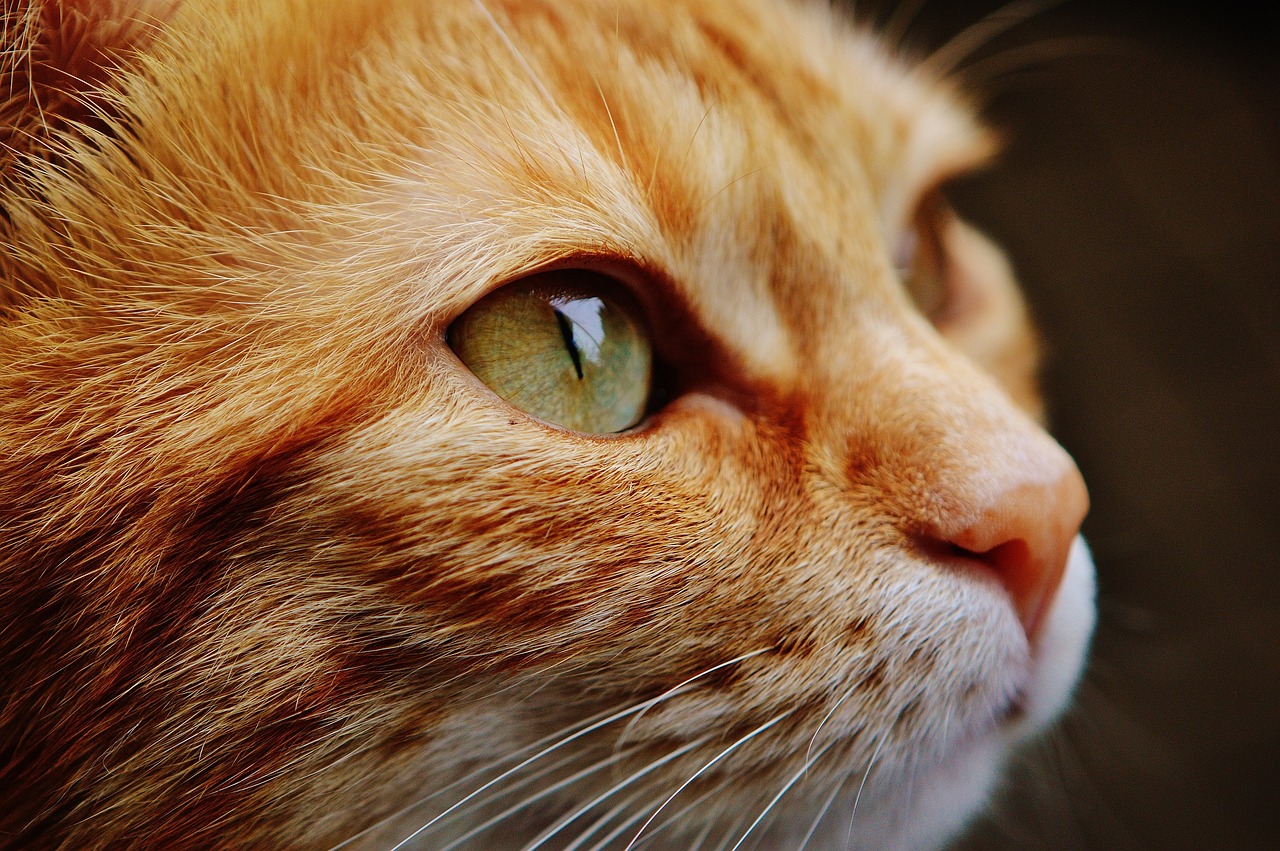
Regular Veterinary Check-ups
This article will explore the subtle signs of aging in pets, helping owners to recognize and address their furry friends' changing needs as they grow older.
As pets age, they undergo various physical transformations. Observing these changes can help owners understand their pet's health and comfort levels, ensuring they receive the necessary care.
Older pets often exhibit changes in behavior. Recognizing these shifts is crucial for maintaining their well-being and adapting their environment to suit their evolving needs.
A noticeable decline in energy and playfulness can be one of the first signs of aging. Owners should monitor their pets' activity to ensure they remain engaged and stimulated.
As pets age, their sleep patterns may change. Increased sleep or difficulty settling down can indicate discomfort or health concerns that need attention.
Aging pets may show changes in their appetite. Whether it's increased hunger or reluctance to eat, monitoring these habits is essential for maintaining their health.
Older pets may become less social or exhibit changes in their interactions with humans and other animals. Understanding these changes can help owners provide the right level of companionship.
Recognizing early signs of health issues is vital for aging pets. Being aware of common ailments can lead to timely veterinary intervention and improved quality of life.
Dental health often declines in older pets. Owners should be vigilant about signs of dental disease, as it can lead to pain and other health complications.
Aging pets frequently experience joint stiffness and mobility challenges. Identifying these issues early allows for appropriate management, ensuring their comfort and mobility.
Routine veterinary visits become even more critical as pets age. These check-ups are essential for monitoring your pet's health and catching any potential issues before they escalate. Just like humans, our furry friends require regular health assessments to ensure their quality of life. During these visits, veterinarians can perform a thorough examination and discuss any noticeable changes in behavior or health.
Moreover, regular check-ups can help in:
- Early Detection: Identifying health problems early can lead to more effective treatment options.
- Vaccination Updates: Keeping vaccinations up to date is crucial for preventing diseases.
- Preventive Care: Discussing diet, exercise, and lifestyle adjustments can enhance your pet's well-being.
It’s advisable to schedule check-ups at least twice a year for senior pets. During these visits, your vet may recommend specific tests such as blood work or X-rays to assess your pet's internal health. This proactive approach not only helps in managing existing conditions but also plays a vital role in preventing future health issues.
In summary, regular veterinary check-ups serve as a lifeline for aging pets, allowing owners to stay informed and engaged in their pet's health journey. Think of it as a tune-up for your furry friend, ensuring they run smoothly and happily for years to come!
- How often should I take my aging pet to the vet? It is recommended to schedule check-ups at least twice a year for senior pets.
- What signs indicate my pet needs to see the vet sooner? Look for significant changes in behavior, appetite, or mobility as these may indicate underlying health issues.
- Are there specific tests my vet might recommend for older pets? Yes, common tests include blood work, urinalysis, and possibly X-rays to monitor internal health.
- Can I prevent aging-related issues in my pet? While aging is natural, regular vet visits, a balanced diet, and proper exercise can help mitigate some age-related problems.
Frequently Asked Questions
- What are the early signs of aging in pets?
Early signs of aging in pets can include physical changes like graying fur, decreased energy levels, and changes in weight. Behavioral shifts such as altered sleeping patterns and changes in appetite are also key indicators. Keeping an eye on these signs can help you address your pet's needs effectively.
- How can I tell if my pet is experiencing joint pain?
If your pet is showing signs of joint pain, you might notice them being less active, having difficulty jumping or climbing stairs, or showing reluctance to play. Observing changes in their normal behavior, like favoring one leg or being hesitant to move, can also be telling signs.
- Why is regular veterinary check-up important for aging pets?
Regular veterinary check-ups are crucial for aging pets because they help catch health issues early, allowing for timely treatment. As pets age, they become more susceptible to various health problems, and routine visits can ensure that your furry friend stays healthy and happy.
- What changes should I expect in my pet's eating habits as they age?
As pets age, you may notice fluctuations in their appetite. Some pets may become less interested in food, while others might seem hungrier than usual. It’s important to monitor these changes closely, as they can indicate underlying health issues that need to be addressed.
- How can I help my aging pet maintain their quality of life?
To help your aging pet maintain a good quality of life, ensure they have a comfortable living environment, provide appropriate diets, and engage them in gentle exercise. Regular vet visits and being attentive to their changing needs will also go a long way in keeping them happy and healthy.
- What should I do if I notice behavioral changes in my aging pet?
If you notice behavioral changes in your aging pet, it’s essential to assess their overall health and comfort. Consider consulting your veterinarian to rule out any health issues and get advice on how to adapt their environment to better suit their needs.


